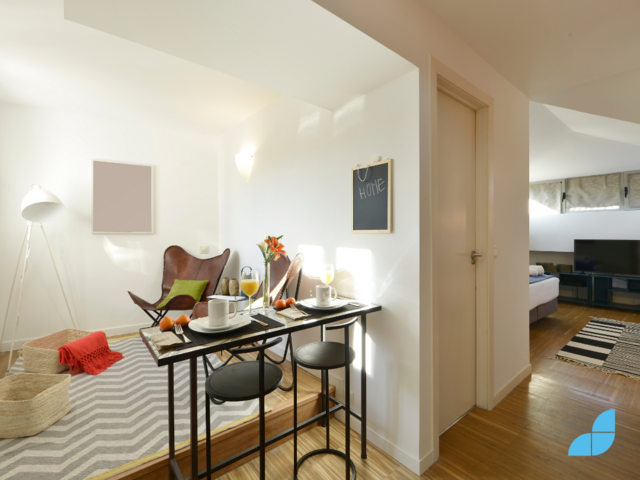It has been proven time and time again that size does not in fact matter, and living in a small space doesn't mean sacrificing style or comfort. With the right strategies, you can maximise every square inch of your home and create a functional and inviting space that feels spacious and clutter-free. Get ready to explore top tips and tricks for compact living, helping you make the most of your small space without compromising style or functionality.

Space-saving furniture solutions
When it comes to furnishing a small space, choose your furniture carefully with a focus on function as much as form. Multi-functional pieces can tick lots of boxes simultaneously. Choose a sofa that pulls out as a bed or a coffee table with storage. Wall-mounted furniture is also a great space-saving solution, as it frees up valuable floor space and creates a sense of openness in the room.
While storage is always a focus of small spaces, it doesn’t mean you need to compromise on style.
Clever storage solutions
Also look for creative storage solutions that use vertical space, such as tall shelving units or floating shelves. Use under-bed storage boxes or ottomans with hidden compartments to keep clutter at bay. Maximising vertical and hidden storage lets you keep your small space organised and clutter-free.
Lighting and bright colours palettes
Light and bright colours can also create the illusion of more making a small space feel larger and more open. Opt for neutral tones like whites, creams, and light greys to create a sense of airiness and spaciousness. If you’re a fan of colour, add pops of colour with accessories like cushions, throws, and artwork. This can inject personality into your space without overwhelming it.
Strategic Lighting design
As for lighting, make the most of natural light by avoiding window treatments and choosing light-filtering fabrics. Supplement natural light with strategically placed artificial lighting, such as recessed ceiling lights or wall sconces. This will create a bright and inviting atmosphere throughout your space.

Flexible furniture arrangements
When arranging your furniture, flexibility is key. Experiment with different layouts to find the most efficient use of space. Consider modular furniture that can be easily rearranged to accommodate different activities or open up entertaining space. You can adapt your space to suit your needs and by keeping your furniture arrangement flexible, you don’t necessarily need to completely upend your lifestyle.
Mirror magic
It is interior design’s worst kept secret that mirrors are the best friend of a small space. But that’s because they work! Mirrors will reflect light and create the illusion of space, making a room feel larger and more open. Hang a large mirror on a wall opposite a window and it will maximise natural light, or use smaller mirrors strategically throughout your space to bounce light around and create depth. The magic of mirrors cannot be underestimated.
Declutter regularly
The bane of a small space can be the fast accumulation of clutter. Clutter not only looks unkempt, but it can make the room feel cramped and claustrophobic. Create a habit of regularly decluttering and keep only the essentials. Invest in multi-purpose furniture with built-in storage to help keep clutter at bay, and be ruthless when it comes to editing your belongings. A clutter-free space looks bigger and feels more peaceful and organised. Plus, it can be a cleansing experience to rid yourself of unnecessary “stuff”.
Maximising small spaces is all about smart design choices and creative solutions. By incorporating space-saving furniture, clever storage solutions, and light and bright colour palettes, you can create a functional, inviting space that feels spacious and clutter-free. If you're passionate about interior design and want to learn more, don't forget to check out our interior design courses. Whether you're looking for a new hobby or considering a career change, our courses provide the knowledge and skills you need to succeed in the world of interior design.


